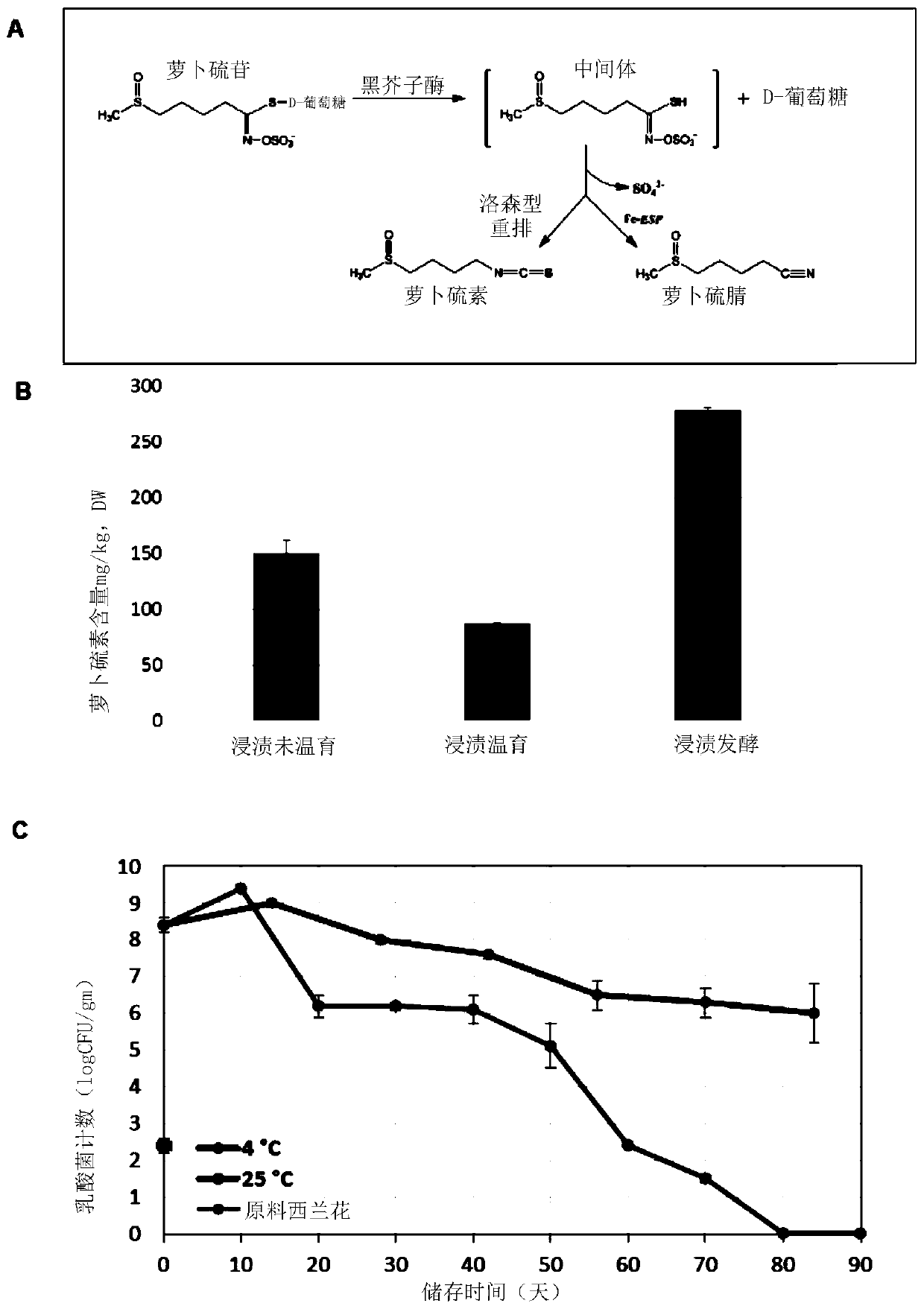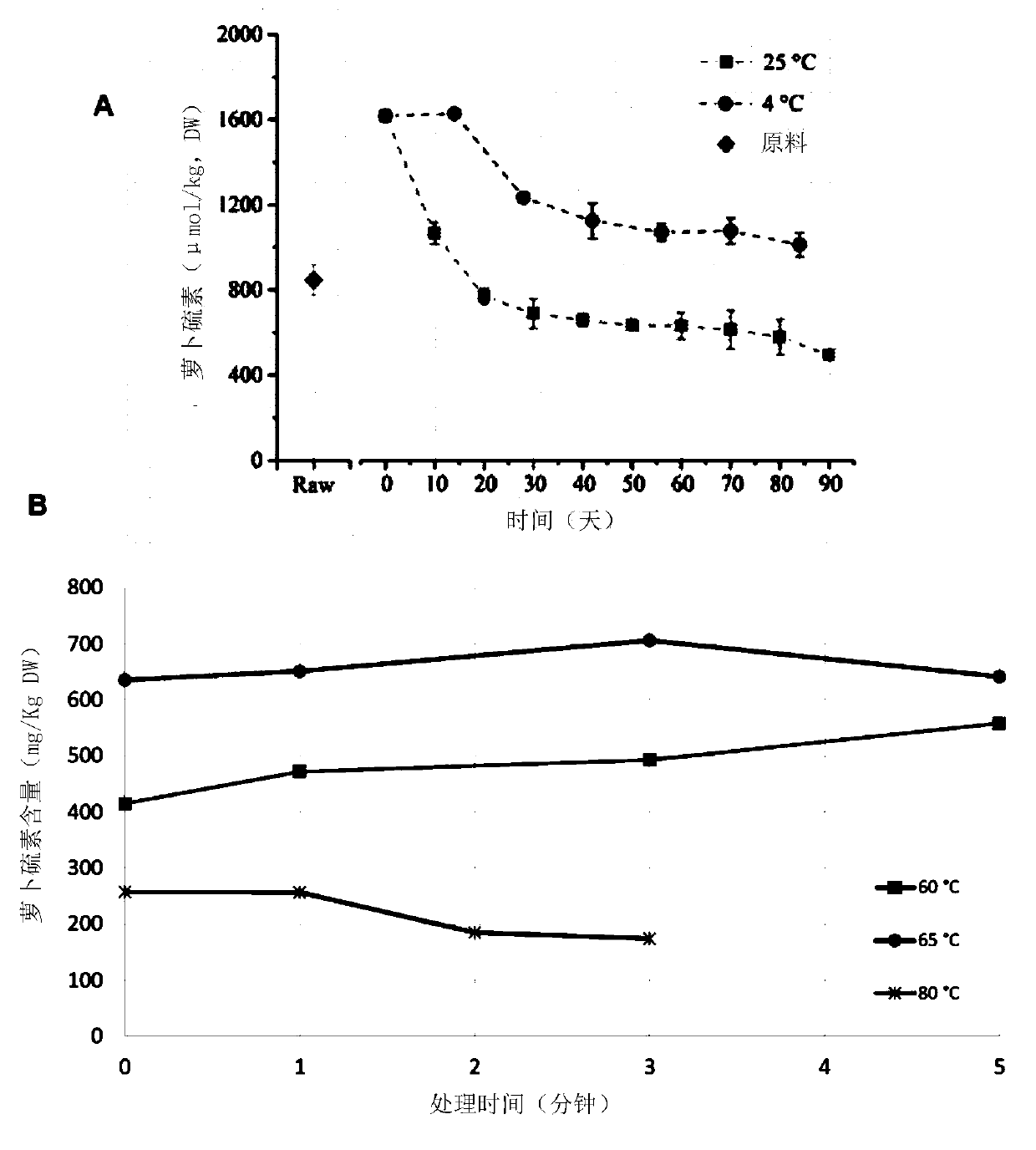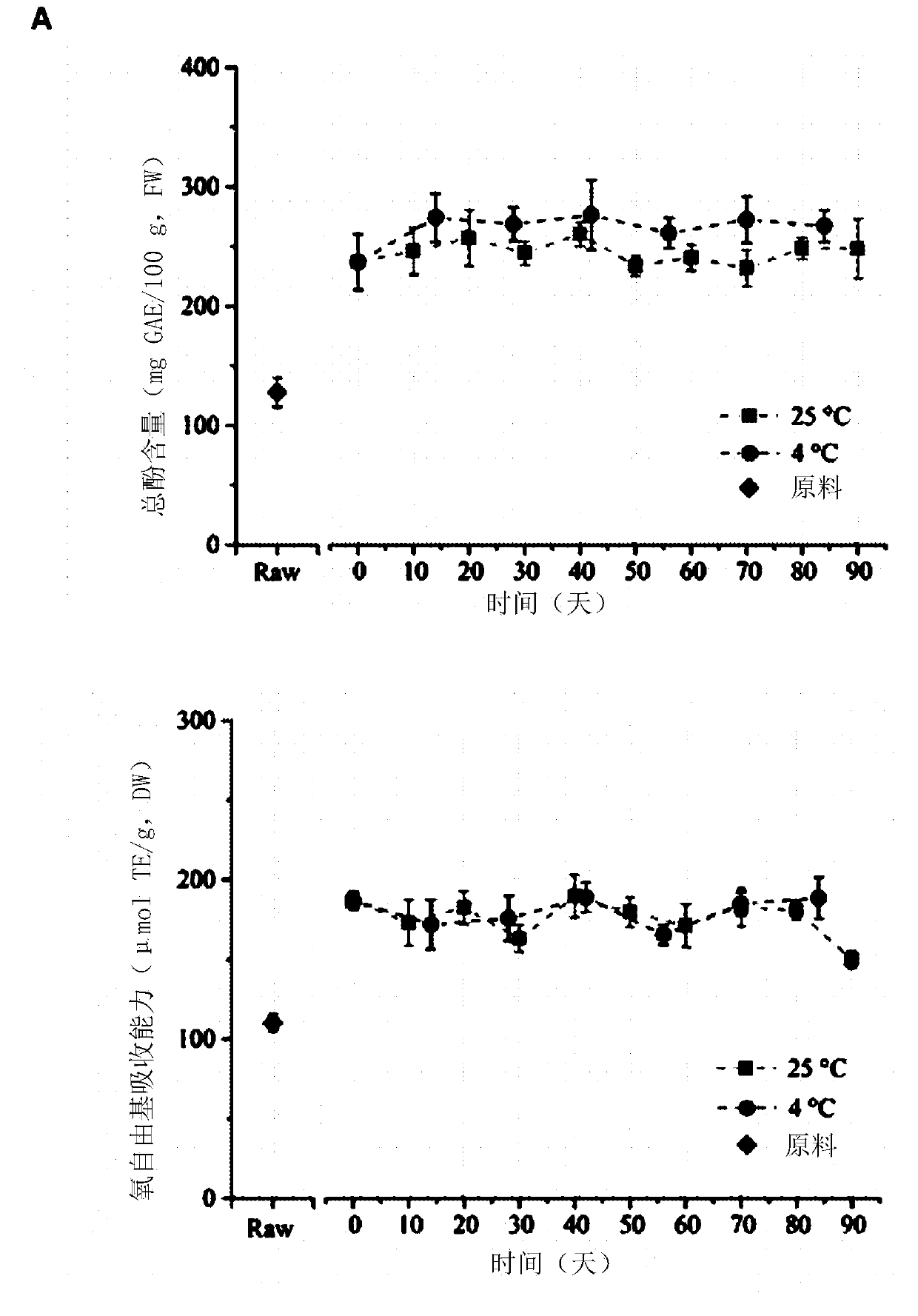Isothiocyanate containing brassicaceae products and method of preparation thereof
An isothiocyanate and cruciferous technology, which is applied in the field of isothiocyanate-containing cruciferous products and their preparation, and can solve the problems of reducing ability, glucosinolate loss and the like
- Summary
- Abstract
- Description
- Claims
- Application Information
AI Technical Summary
Problems solved by technology
Method used
Image
Examples
Embodiment
[0233] Example 1 - Method
[0234] Chemicals and Reagents
[0235] HPLC grade methanol, sodium dihydrogen phosphate, sodium hydroxide (NaOH) and hydrochloric acid (HCl) were purchased from Merck (Damstadt, Germany). Folin-Ciocalteu reagent, sodium carbonate (Na 2 CO 3 ), gallic acid, fluorescein sodium salt, and dipotassium hydrogen phosphate were purchased from Sigma Aldrich (St. Louis, MO, USA). Sodium dihydrogen phosphate, 6-hydroxy-2,5,7,8-tetramethylchroman-2-carboxylic acid (trolox), 2,20-azobis(2-methylpropionamidine) Dihydrochloride (AAPH) was purchased from Sapphire Bioscience (Redfern, NSW, Australia).
[0236] Lactic acid bacteria
[0237] The lactic acid bacteria used in the fermentation process are selected from one or more of the following:
[0238] LP: Lactobacillus plantarum ATCC8014;
[0239] LGG: Lactobacillus rhamnosus ATCC53103;
[0240] B1: Lactobacillus plantarum isolated from broccoli deposited at the Australian National Metrology Institute on Se...
Embodiment 2
[0280] Microbial analysis of broccoli florets fermented by lactic acid bacteria of embodiment 2-
[0281] Fermentation of the broccoli puree was performed as described in the fermentation section of Example 1. As shown in Table 1, total lactic acid bacteria counts were lower in raw broccoli compared to inoculated broccoli. After 4 days of fermentation, when the pH of the sample reached 4.04, the fermentation was stopped, and the fermentation sample before the storage experiment was used as the sample on day 0. From Table 1 and figure 1 C clearly shows a significant increase in total lactic acid bacteria counts (8 log CFU / g) in the day 0 sample compared to the raw broccoli. During the first two weeks of storage, the viable numbers of total lactic acid bacteria increased to a maximum of 9 log CFU / g for samples stored at 25°C and 4°C (Tables 1 and 2). During storage at 25°C, total lactic acid bacteria counts increased to 9 log CFU / g on day 10 and slowly decreased to 5 log CFU / ...
Embodiment 3
[0287] Example 3 - Assessment of pH and titratable acidity of broccoli florets fermented by lactic acid bacteria after storage
[0288] Raw broccoli, fermented broccoli after storage at 25°C and 4°C, and fermented broccoli were analyzed for pH and titratable acidity (TA) as described in Example 1. The determination of TA was used to estimate the amount of lactic acid and acetic acid (the main acids produced by lactic acid bacteria) during fermentation. During fermentation, the acid produced by the lactic acid bacteria lowers the pH of the sample. As shown in Table 1, TA increased to 10.7 g / L in the day 0 samples. When stored at 25°C, the pH dropped to 3.87 after 10 days during storage, while the TA value increased significantly to 14.4 g / L (p<0.05; see Table 1). The results showed that at the initial stage of storage, there were still substrates for lactic acid bacteria to consume and further produce acid. Neither pH nor TA values changed significantly during the remainin...
PUM
| Property | Measurement | Unit |
|---|---|---|
| size | aaaaa | aaaaa |
| size | aaaaa | aaaaa |
| size | aaaaa | aaaaa |
Abstract
Description
Claims
Application Information
 Login to View More
Login to View More - R&D
- Intellectual Property
- Life Sciences
- Materials
- Tech Scout
- Unparalleled Data Quality
- Higher Quality Content
- 60% Fewer Hallucinations
Browse by: Latest US Patents, China's latest patents, Technical Efficacy Thesaurus, Application Domain, Technology Topic, Popular Technical Reports.
© 2025 PatSnap. All rights reserved.Legal|Privacy policy|Modern Slavery Act Transparency Statement|Sitemap|About US| Contact US: help@patsnap.com



